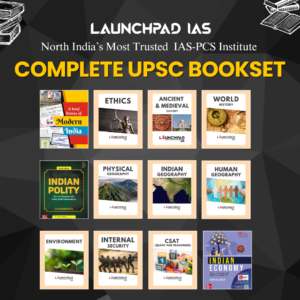- Rare Earth Metals are a set of seventeen metallic elements. These include the fifteen lanthanides on the periodic table and scandium and yttrium, which show similar physical and chemical properties to the lanthanides.
- The 17 Rare Earths are cerium (Ce), dysprosium (Dy), erbium (Er), europium (Eu), gadolinium (Gd), holmium (Ho), lanthanum (La), lutetium (Lu), neodymium (Nd), praseodymium (Pr), promethium (Pm), samarium (Sm), scandium (Sc), terbium (Tb), thulium (Tm), ytterbium (Yb), and yttrium (Y).
- These minerals have unique magnetic, luminescent, and electrochemical properties and thus are used in many modern technologies, including consumer electronics, computers and networks, communications, health care, national defense, clean energy technologies etc.
- Even futuristic technologies need these REEs.
- For example, high-temperature superconductivity, safe storage and transport of hydrogen for a post-hydrocarbon economy etc.
- They are called ‘rare earth’ because earlier it was difficult to extract them from their oxides forms technologically.
- They occur in many minerals but typically in low concentrations to be refined in an economical manner.
How China Monopolised Rare Earths?
- China has over time acquired global domination of rare earths, even at one point, it produced 90% of the rare earths the world needs.
- Today, however, it has come down to 60% and the remaining is produced by other countries, including the Quad (Australia, India, Japan and United States).
- Since 2010, when China curbed shipments of Rare Earths to Japan, the US, and Europe, production units have come up in Australia, and the US along with smaller units in Asia, Africa, and Latin America.
- Even so, the dominant share of processed Rare Earths lies with China.
What is India’s Current Policy on Rare Earths?
- Exploration in India has been conducted by the Bureau of Mines and the Department of Atomic Energy. Mining and processing has been performed by some minor private players in the past, but is today concentrated in the hands of IREL (India) Limited (formerly Indian Rare Earths Limited), a Public Sector Undertaking under the Department of Atomic Energy.
- India has granted government corporations such as IREL a monopoly over the primary mineral that contains REEs: monazite beach sand, found in many coastal states.
- IREL produces rare earth oxides (low-cost, low-reward “upstream processes”), selling these to foreign firms that extract the metals and manufacture end products (high-cost, high-reward “downstream processes”) elsewhere.
- IREL’s focus is to provide thorium — extracted from monazite — to the Department of Atomic Energy.
What are the Related Steps taken?
- Globally:
- The Multilateral Minerals Security Partnership (MSP) was announced in June 2022, with the goal of bringing together countries to build robust critical minerals supply chains needed for climate objectives.
- Involved in this partnership are the United States (US), Canada, Australia, Republic of Korea, Japan, and various European countries.
- India is not included in the partnership.
- By India:
- Ministry of Mines has amended Mines and Minerals (Development and Regulation) (MMDR) Act, 1957 through the Mines and Minerals (Development and Regulation) Amendment Act, 2021 for giving boost to mineral production, improving ease of doing business in the country and increasing contribution of mineral production to Gross Domestic Product (GDP).
- The amendment act provides that no mine will be reserved for particular end-use.
- India must take lessons from other advanced economies on how they are planning to secure their mineral needs and attempt to join multinational fora on assuring critical mineral supply chains – or use existing partnerships, such as Quad and BIMSTEC, to foster such dialogues.
- There must also be top-level decision making within the government to strategize on how to create vertically integrated supply chains of green technologies manufacturing, or we may be in serious danger of missing out on our climate change mitigation targets.
- India needs to create a new Department for Rare Earths (DRE), which would play the role of a regulator and enabler for businesses in this space.
-
 Complete UPSC Bookset₹7,499.00Rated 5.00 out of 5 based on 1 customer rating
Complete UPSC Bookset₹7,499.00Rated 5.00 out of 5 based on 1 customer rating -
Sale Product on sale
 UPSC CSE 2026 Online Course
UPSC CSE 2026 Online Course₹64,500.00Original price was: ₹64,500.00.₹54,500.00Current price is: ₹54,500.00.Rated 5.00 out of 5 based on 2 customer ratings -
Sale Product on sale
 UPSC CSE 2027 Online Course
UPSC CSE 2027 Online Course₹79,500.00Original price was: ₹79,500.00.₹69,500.00Current price is: ₹69,500.00.Rated 5.00 out of 5 based on 3 customer ratings -
Sale Product on sale
 UPSC CSE 2028 Online Course
UPSC CSE 2028 Online Course₹94,500.00Original price was: ₹94,500.00.₹84,500.00Current price is: ₹84,500.00.Rated 5.00 out of 5 based on 3 customer ratings

